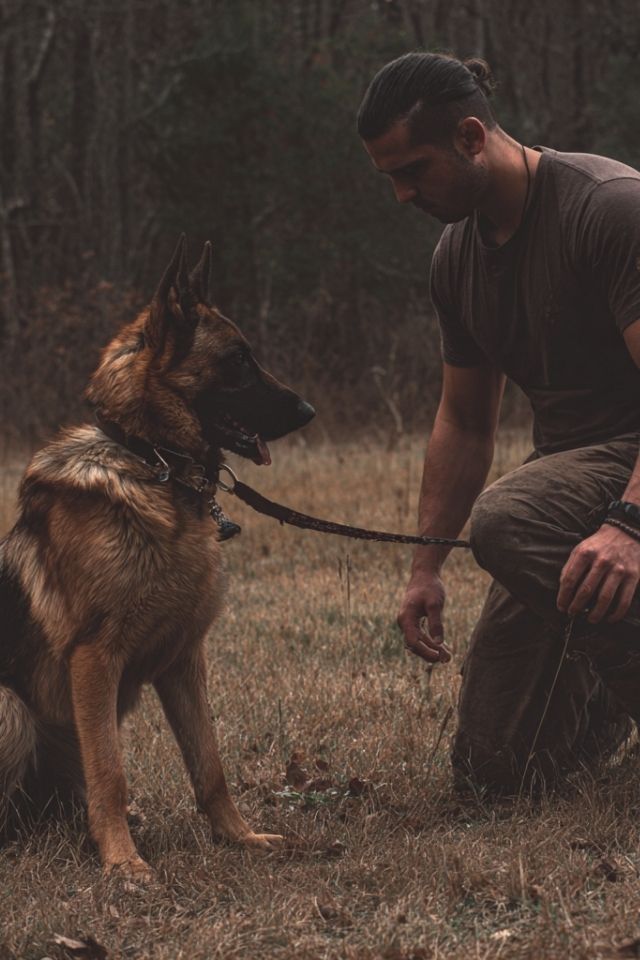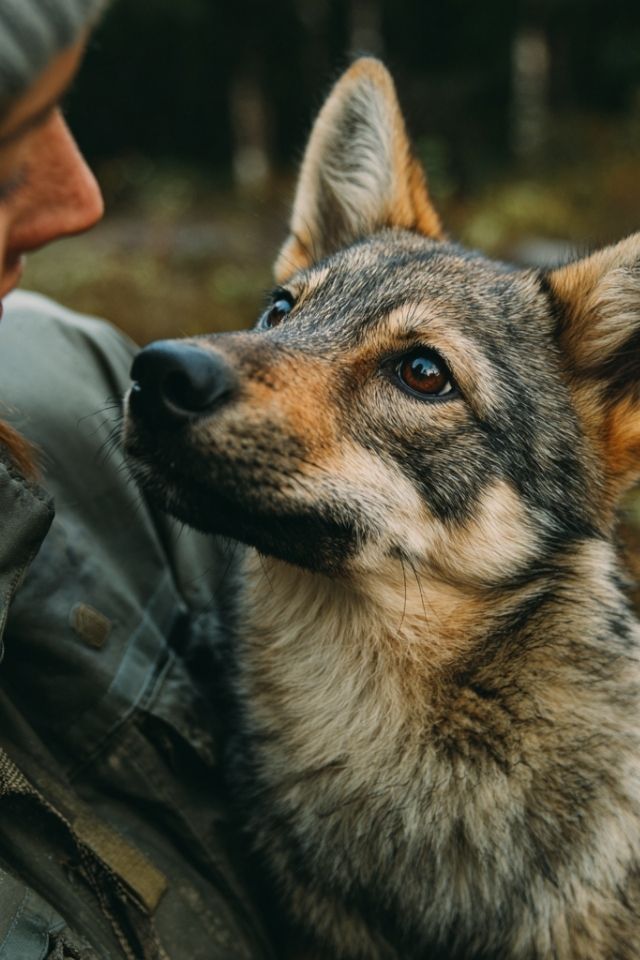When the Body Remembers What the Mind Forgets
There’s a moment many of us recognize—when your dog’s eyes meet yours, and something shifts. Not dramatic. Not loud. Just a softening. A breath released. A body that finally allows itself to rest.
But what if I told you that this moment, this capacity for calm, doesn’t live only in training or trust or time? What if it also lives in something far quieter—in the cellular whispers of a mineral most of us never think about?
Magnesium. It sounds clinical, doesn’t it? Yet it moves through your dog’s body like an invisible conductor, orchestrating the rhythm between tension and release, between reactivity and rest. It sits at the gates of neurons, deciding which signals pass through and which ones stay outside. It touches the stress hormones that flood during a thunderstorm. It shapes the quality of sleep, the depth of breath, the ability to return to center after the world has pulled them away.
Through the NeuroBond we build with our dogs, we learn to read their emotional language—the tight jaw, the restless pacing, the eyes that never quite close. But sometimes, what we’re reading isn’t just fear or anxiety or lack of training. Sometimes, it’s the body itself, quietly struggling with something it cannot name. 🧠
The Architecture of Arousal: How Neurons Learn to Listen
Picture this: your dog’s brain as a city at night, lit by millions of tiny signals. Each neuron is a house, and each connection between them is a doorway. Some doors swing open easily. Others stay locked until the right key arrives.
Magnesium is one of those keys. It doesn’t force doors open—it sits calmly at the threshold, a gentle presence that says, Not yet. Not unless this truly matters.
When a signal arrives—a sound, a smell, a shift in your energy—magnesium evaluates. Is this a genuine threat? Does this require action? If the answer is no, magnesium stays in place, blocking the calcium that would otherwise flood in and fire the neuron into overdrive. This is how your dog learns to distinguish between the mail carrier and an intruder, between thunder and danger, between excitement and emergency.
But when magnesium is scarce, those gates become unreliable. Neurons fire too easily. The world becomes louder, sharper, more threatening. Your dog startles at sounds they once ignored. They cannot settle after play. Their nervous system has lost its ability to say, It’s okay. You’re safe. You can rest now.
And there’s another layer to this story. Magnesium doesn’t just guard the gates—it also supports the brain’s calming system, the GABAergic pathways that whisper slow down, soften, breathe to an overstimulated mind. When GABA flows properly, your dog can transition from arousal to ease. They can chase a ball and then, moments later, curl beside you in stillness.
The Invisible Leash we speak of isn’t just about emotional connection—it’s also about the internal tether between excitation and inhibition, the delicate balance that allows a nervous system to flex without breaking. 🧡
The Stress That Doesn’t Leave: When the Body Can’t Let Go
Think of a dog who has lived through chaos—a shelter dog, perhaps, or one who endured neglect. They arrive in your home, and you offer them everything: safety, routine, patience, love. Yet weeks pass, and they still cannot settle. They pace. They startle. They watch the door as if danger might slip through at any moment.
You’ve done everything right. But their body hasn’t caught up to their new reality.
This is where the HPA axis enters the story—the hypothalamus, pituitary, and adrenal glands working together to manage stress. When your dog perceives a threat, this system releases cortisol, preparing the body to fight or flee. In acute moments, this is life-saving. But when stress becomes chronic, the system forgets how to turn off. Cortisol lingers. The body remains on high alert, even when the danger has passed.
Here’s the difficult truth: stress depletes magnesium. The more cortisol your dog produces, the more magnesium their body burns through, excreting it faster than they can replenish it. And low magnesium, in turn, makes the stress response even more sensitive, even harder to calm. It’s a feedback loop, a spiral that tightens with each passing day.
I’ve watched this happen. A dog who arrives tense, hypervigilant, unable to rest. You implement all the behavioral protocols—counterconditioning, desensitization, careful management. Progress is slow, sometimes stalled. Then you optimize their nutrition, ensure adequate magnesium, and something shifts. Not overnight. Not dramatically. But gradually, you notice: they sleep more deeply. They recover faster from triggers. The tension in their shoulders begins to soften.
It’s not that magnesium solved everything. It’s that it gave their nervous system the biochemical foundation to respond to everything else you were offering. Through moments of Soul Recall—when they look at you and something ancient and knowing passes between you—you realize: healing happens in layers. And sometimes, the deepest layer is the one we cannot see. 🐾
Reading the Body’s Quiet Language
Your dog cannot tell you they need magnesium. But their body speaks in other ways, if you learn to listen.
The Signs Written in Behavior:
Watch the dog who cannot transition. They play with wild energy, then pace for an hour afterward, unable to find the off switch. They sleep, but lightly, waking at the smallest sound. They react to the doorbell as if it’s a gunshot, and ten minutes later, their heart is still racing.
You might notice hypervigilance—ears always rotating, eyes always scanning, a body that never fully surrenders to rest. Or you see frustration that flares too quickly, patience that runs too thin. They were calm a moment ago; now they’re snapping at the air, trapped in some internal storm you cannot touch.
The Signs Written in Muscle:
Run your hand along your dog’s back. Do you feel tension? A tightness in the shoulders that never releases? A jaw held just slightly too firm? Some dogs tremble at rest, small involuntary twitches in the legs or face. Others flinch when you touch certain areas, not from fear, but from a discomfort they cannot explain.
Movement tells its own story. A gait that’s stiff, transitions between positions that look effortful, a body that seems to carry invisible weight.
The Signs Written in Sleep:
Perhaps the clearest language of all. Your dog lies down but doesn’t descend into deep rest. They shift position frequently. Their breathing never fully slows. They wake multiple times through the night, as if some part of them refuses to let go, refuses to trust that it’s safe to be unconscious.
These are not always signs of magnesium deficiency—bodies are complex, and many factors shape behavior. But they are whispers worth hearing, clues worth following, especially when other interventions haven’t brought the peace you’re seeking. 😊
The Alchemy of Absorption: Why Some Dogs Need More
Not all magnesium is created equal, and not all dogs absorb it the same way.
Imagine two dogs eating identical meals. One thrives. The other struggles with anxiety, despite perfect training and a loving home. What’s the difference? Perhaps it’s genetic—some dogs are simply more efficient at absorbing and utilizing magnesium. Perhaps it’s stress—one dog lives in a calm household, while the other navigates the chaos of city life, their cortisol constantly elevated. Perhaps it’s age—the puppy’s growing brain demands more, the senior’s aging gut absorbs less.
The form of magnesium matters, too. Magnesium oxide, cheap and common, passes through the digestive system mostly unabsorbed—a wasted opportunity. Magnesium glycinate, paired with the amino acid glycine, offers both high absorption and its own gentle calming effect, a synergy written into chemistry itself. Magnesium citrate moves through the body with ease. Magnesium threonate may even cross into the brain more readily, though the research in dogs is still young.
And then there are the other factors—the diet high in fat that binds magnesium before it can be absorbed, the calcium supplement that competes for the same pathways, the inflammatory bowel condition that prevents nutrients from ever reaching the bloodstream.
For working dogs—those who serve, protect, search, or compete—the demands are even higher. Their muscles work harder. Their stress is more frequent. Their recovery must be faster. These dogs, perhaps more than any others, need every advantage we can offer. Not to push them harder, but to support them better. To honor what they give by ensuring their bodies have what they need to give it. 🧡
Weaving Magnesium Into the Larger Story
I want to be clear about something: magnesium is not a miracle. It will not erase trauma. It will not replace training. It will not transform a dog overnight.
But it is a thread—one thread in a larger tapestry of wellness.
Think of it this way: you’re working with a reactive dog. You’ve implemented careful desensitization. You’ve created a calm environment. You’ve built trust through patience and consistency. But their nervous system is still running on empty, depleted of the very nutrients it needs to process learning, to regulate emotion, to return to baseline after stress.
It’s like asking someone to build a house without giving them nails. The blueprint is perfect. The materials are there. But something essential is missing.
Magnesium provides that missing piece—not as a solution in itself, but as a foundation that allows everything else to work better. Sleep becomes more restorative. Training sessions become more focused. Recovery from stress happens more quickly. The dog’s capacity to receive what you’re offering expands.
This is the essence of Zoeta Dogsoul: we don’t isolate variables. We don’t reduce behavior to a single cause. We honor the whole being—the body, the nervous system, the emotional history, the environment, the relationship. We recognize that true transformation happens when all these elements align, when we support every layer of who the dog is.
And sometimes, supporting that begins with something as simple—and as profound—as a mineral. 🐾
Small Shifts, Deep Ripples: What Change Looks Like
When magnesium begins to make a difference, the shifts are rarely dramatic. You won’t wake up to a different dog. But over days and weeks, you’ll notice:
They settle faster after excitement. Where they once paced for twenty minutes, now it’s five. Their body remembers how to release.
Sleep deepens. You watch them dream, their breathing slow and even, and you realize: they haven’t slept like this in months. Maybe ever.
Touch softens something. You run your hand along their back, and instead of tension, you feel muscles that yield. They lean into your palm instead of pulling away.
Training clicks. Suddenly, behaviors that felt impossible begin to stick. Their focus holds longer. Their frustration threshold rises. It’s not that they’ve become more obedient—it’s that their nervous system finally has the capacity to learn.
Reactivity dims. The trigger that once sent them spiraling now draws a glance, then a return to calm. Not because they’ve forgotten to be afraid, but because their body can process the fear and move through it, rather than staying trapped inside it.
These aren’t miracles. They’re possibilities unlocked. They’re a nervous system that finally has the tools to do what you’ve been asking it to do all along: regulate, adapt, heal. 🧠
The Invitation: To See What Lies Beneath
Here’s what I’ve learned after years of watching dogs transform: behavior is always a conversation between the visible and the invisible. Between what we can train and what we must nourish. Between what happens in the moment and what’s been building in the cells, the neurons, the quiet places we cannot see.
Your dog’s struggles may not be about willfulness or fear or lack of training. They may be about a body that lacks the resources to do what their heart wants to do: trust, rest, connect, heal.
Magnesium won’t give you that connection. You build that through presence, patience, and time. But magnesium might give your dog’s body the capacity to receive that connection, to let it land, to let it change them.
So I invite you to wonder: What if the reactivity you’re managing, the anxiety you’re addressing, the sleeplessness you’re witnessing—what if part of the answer lives not in what you do, but in what you provide? What if calm isn’t just trained, but nourished? What if peace begins at the cellular level, in the quiet work of a mineral most of us never think about?
That’s the overlooked story. That’s the missing chapter. And perhaps, for your dog, it’s the chapter that changes everything.
Because sometimes, the most profound shifts happen in the places we least expect. In the invisible. In the quiet. In the space between heartbeats, where the body finally whispers: Yes. Now I can rest. 🧡






